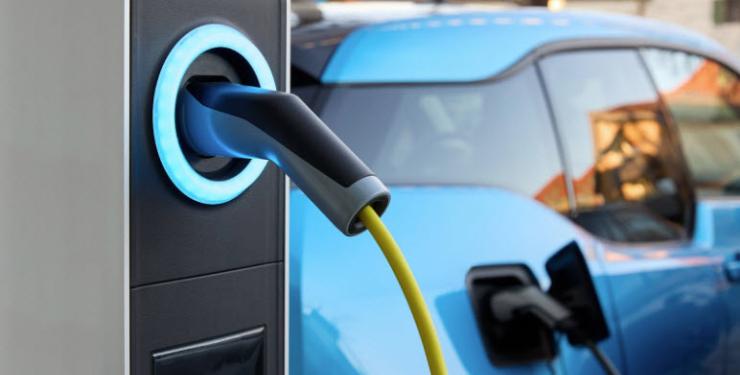Comparing the Three Levels of Electric Vehicle Charging
It’s undeniable that the number of EV powered vehicles will surpass their fossil fuel-dependent counterparts sooner rather than later. And while the transfer of energy seems similar between the vastly different technologies, the “pumps” used couldn’t be more different and, in the case of EV charging stations, much more complex. The fact of the matter is that charging your electric vehicle will not be as easy or as quick as topping off your current combustion engine.
Leaded, unleaded, diesel. Though the mixtures vary in their composition, there is no discernible difference in the time it takes to fuel a standard vehicle. The same cannot be said for electric vehicles, whose recharging times can vary widely due to several factors ranging from a charger’s connector type to the amount of power a vehicle can accept. As the deployment of EV charging infrastructure ramps up, some consideration must be given to the different types of charging stations available. This article will examine the nuances between the three different levels of electric vehicle charging.
Why Are There Three Levels of Charging?
The simple answer is there isn’t one charging application that is suitable for all of a vehicle owner’s needs. Each level represents an accelerated method of charging an EV battery, meaning the higher the level the more power is delivered to the battery. While the process may seem comparable to choosing between leaded and unleaded gasoline at a conventional pump, there’s a bit more to it than that.
For example, there is no difference between the speed at which regular or premium gasoline is pumped into a combustion engine vehicle. When an EV is plugged into a charger however, the vehicle and charging station will communicate the logistics of the upcoming charge, specifically, the car will “query” the station to determine how much power can be delivered. Then, the vehicle will call for the maximum amount of power that the station can deliver, and the vehicle accepts.
Additionally, there is a time and a place where each level of charging is most appropriate; each of these will be explored below.

Level 1 Charging: What You Should Know
Even if you aren’t familiar with EV chargers, most people will infer that the first level of EV charging, Level 1, is the slowest charging level, and is therefore most suitable when an EV is parked for an extended period of time, such as at the owner’s home. Since Level 1 chargers output 120V of electricity, a standard household outlet will do the job. Perhaps most importantly to the homeowner, no additional equipment is required to be installed.
The power transfer at Level 1 is not expeditious; EVs plugged into a Level 1 charger can expect to recharge approximately 4 miles of range for every hour it is plugged in. The relatively slow recharge time is the reason that none of the chargers installed for public use will be a Level 1 charger – they are simply too impractical. By contrast, a homeowner can rely on a Level 1 charger to adequately charge their vehicle overnight for their daily commute.
Level 1 chargers are ideal for those who have relatively minimal transportation needs, live in an area in close proximity to most amenities, or those who own a plug-in hybrid vehicle. The smaller battery of a plug-in hybrid vehicle will mean less total charge time than a fully electric vehicle.
Level 2 Charging: What You Should Know
Level 2 charging represents the midway point for EV charging levels. An argument can be made that a residential station that provides Level 2 charging is the best option for most EV owners. That’s because Level 2 charging utilizes a 240V outlet. These are the types of outlets that are typically used for high power consumption appliances like a dryer or a range. Since Level 2 charging offers double the output, an EV can be fully charged overnight, when consumption rates are lowest (depending on the battery, most EVs charging at Level 2 will be fully charged after 6-12 hours. For context a vehicle charging at Level 1 could require upwards of 30 hours to fully charge).
Charging at Level 2 can cost more initially, since homeowners may need to install a 240V outlet in their garage and purchase a Level 2 charger. The charger itself will range in price from around $300 to $700, and homeowner’s will need to hire an electrician to install the necessary outlet and/or upgrade the panel. Even with the additional cost, given how much faster charging at Level 2 is, investing in a Level 2 charger may be a wise move.
Outside of the home, Level 2 charging stations can be found at offices, hotels, or anywhere else a driver may reasonably have several hours before they need to depart.
Level 3 Charging: What You Should Know
Lastly, Level 3 charging – or more commonly known as fast charging – represents the bulk of the charging stations that can be found in public. Commercial establishments that have installed charging stations for their customers will more than likely install Level 3 chargers because, at 480V of output, these chargers can recharge most batteries up to 80% in just under an hour. It should be noted that 80% is considered to be the optimal “full” charge level for most batteries. Charging to 100% capacity can negatively impact the performance of the battery over the long term. For that reason, most manufacturers have designed their EVs to throttle charging speed once the charge level has reached 80%.
These types of charging stations are most reminiscent of conventional gas stations, and many can be found in both urban and rural communities. While it is very unlikely that a technician will ever need to install or service a Level 3 charging station at a private residence, it is likely the most common charging station that EV technicians will be required to work with regularly.
So Many Options Provide Peace of Mind
While there are three distinct charging station levels that are, and will continue to be, widely available, most technicians can expect to work almost exclusively on Level 2 and 3 stations. These will be the chargers that will be tasked to power the ever-increasing number of electric vehicles traveling short, medium, and long distances.
Many jurisdictions have paved the way for significant investments in charging station infrastructure and that means there is an immediate need for EV technicians in major urban centers all over the country. If you’re interested in a career servicing electric vehicle charging stations and want to learn about our Electric Vehicle Technician program, please contact a Program Consultants toll-free at 1-888-553-5333 or email us at [email protected].
